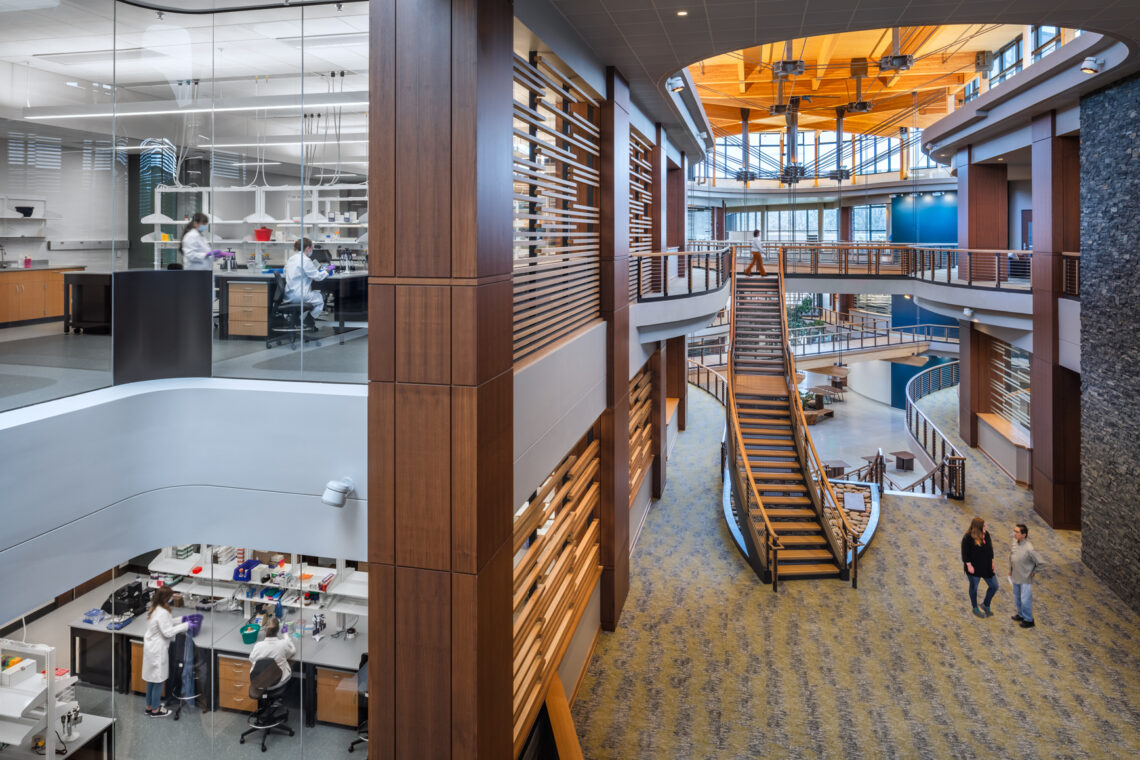Associate Architect, Interior Architect SmithGroup | Chicago, Illinois The pursuit of happiness has become a familiar phrase for many. Yet, its philosophical roots took hold long before it became embedded into documents and local vernacular. For Raquel Guzman Geara, AIA, that pursuit in terms of architecture can help facilitate and enhance the human experience. When rooted in key principles…
-
-
The Euclid model
The Great Lakes ecoregion has stood witness to the passage of time as marsh, dune, and forest habitats expanded and contracted, economic engines of industry rose and fell, and the growth of city populations surged and declined in cyclic fashion. While stalwart, its composition of freshwater sand dunes, sandstone cliffs, pebble beaches, limestone bedrock, and wetland basins have felt that…
-
Catalyst for innovation
In 1956, Arthur Kornberg, American biochemist, realized a pursuit in biochemistry that forever changed the landscape and nature of biology. Kornberg’s discovery of DNA polymerase I not only led to the 1959 Nobel Prize for Physiology or Medicine—shared with Severo Ochoa for his discovery of RNA polymerase—but also served as a catalyst for a biotechnology revolution. Kornberg’s exploration in enzymes…
-
Freshwater future
As a collective of fresh water that houses more than 20 percent of North America’s freshwater volume, the Great Lakes hold a unique status among American waterways. They require special consideration and treatment, especially in the face of climate change’s adverse effects. While the Great Lakes have a long, natural history of water level fluctuation, recent levels signal a decidedly…




